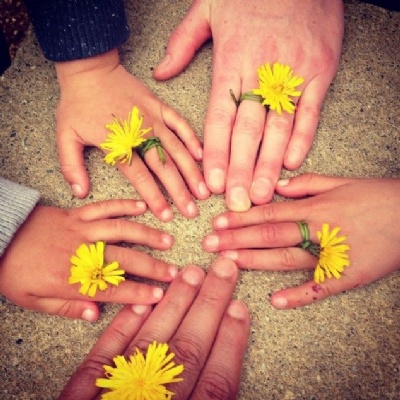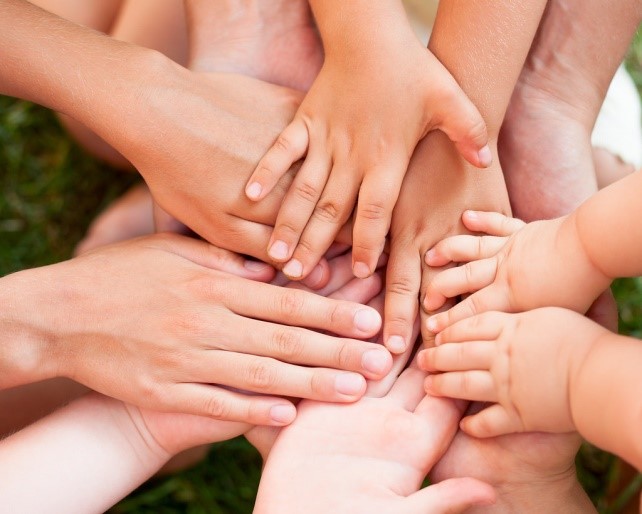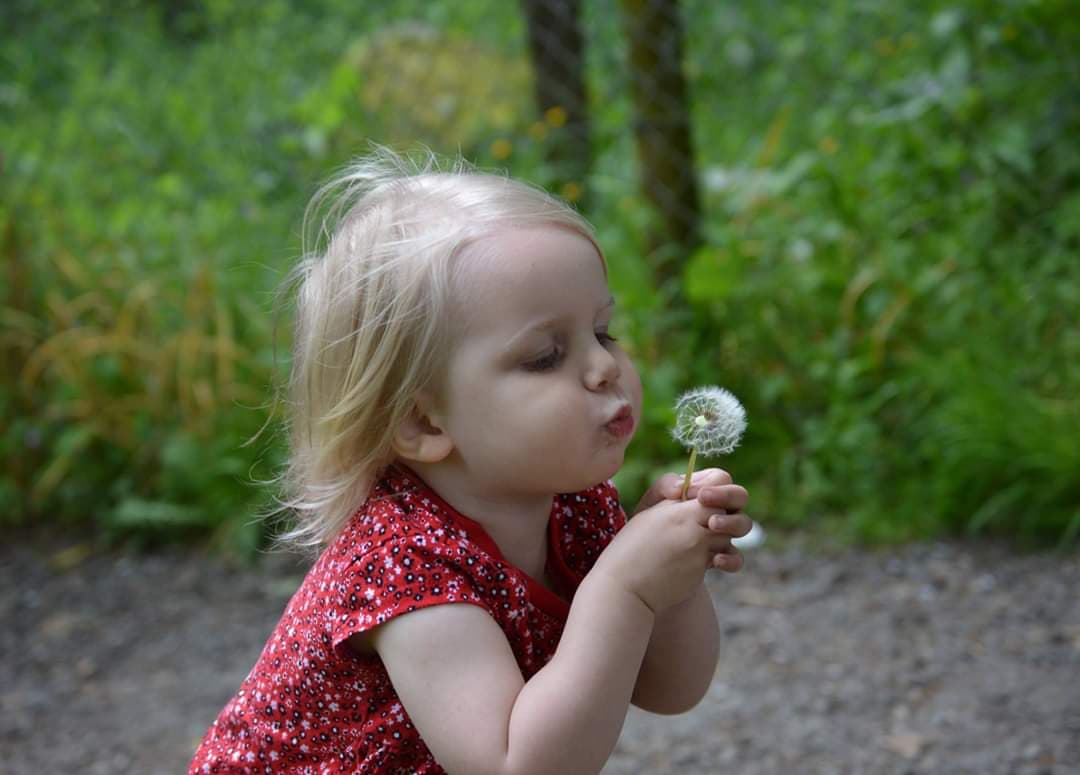Lockdown with children: a survival guide

Up and down the country in these unprecedented times, thanks to Covid-19, families are being brought together in a way that they have never experienced before. Life is being turned upside down on a daily basis, with everyone now isolated, home educating and juggling work and other family commitments. Life is full in a completely different way.
To help, we have produced this survival guide to ensure that you and the family come through this in the best way that you can.
Isolation brings a whole new set of considerations, emotions and feelings to navigate not least of all both child and parent/carer concerns over ‘home education’. Whilst teachers and educators up and down the country are preparing distance learning materials, social media is besieged with detailed study plans and images of hard at work children blissfully ‘taking it all in their stride’. However, there are equally social media posts of parents/carers who do not feel they can live up to this ideal and are left feeling discouraged and frustrated, juggling pressures of work, family, multiple study timetables and their own fears, worries and concerns around the current situation.
The adjustment may not be as plain sailing as many would like us to believe. Unless you are already part of the growing numbers of families that already home educate, home education can feel like diving into the unknown and may feel like an upheaval, rather daunting, and most families will take time to settle into a rhythm. Home is where children come to rest, have a break and regain their physical, emotional and mental energy. The role of educator and parent/carer may feel vastly different for many of us. The important thing to remember is that you do not need to replicate a setting (or school) environment, in fact this would not be possible. Even if home education was a choice your family had made (rather than due to current isolation measures) the DfE (2018, p.7) does not expect parents/carers to replicate a school environment with timetables, set studying hours and so on. During this isolation time families are setting up temporary new learning experiences, and these can be whatever you want and need them to be. Family dynamics are different the world over and what works in one household may not work in another, you know your children, your family and your lives best. As Vygotsky (1978, p.128) suggested, parents/carers have always been a child’s first educators.
So what makes the difference between those who seem to relish the prospect of this new educative challenge and those who find it a nightmare? The answer lies in some part to being confident that you can cope. How confident do you feel?
To help, we have produced this survival guide to ensure that you and the family come through this in the best way that you can. Home is still home and our children, however young, will be aware to varying degrees that something big is happening and they will have thoughts, feelings and concerns about this. Home needs to remain the safe space that everyone needs.
Accept it is not going to be perfect
 To heavily paraphrase Winnicott (1971) and Bettelheim (1988), it does not need to be perfect, it just needs to be good enough. Remember to be kind to yourself and each other; feeling one day ‘you’ve got this’ and the next ‘not so much’ is all completely normal even when not in such unusual circumstances. Forget those families on social media who seem to be continually having a wonderful ‘got it together’ family time. This is not always reality. Facebook only needs a single photograph of smiling children each day to convince people that this is how you are all of the time. And all of us can manage a smile once a day.
To heavily paraphrase Winnicott (1971) and Bettelheim (1988), it does not need to be perfect, it just needs to be good enough. Remember to be kind to yourself and each other; feeling one day ‘you’ve got this’ and the next ‘not so much’ is all completely normal even when not in such unusual circumstances. Forget those families on social media who seem to be continually having a wonderful ‘got it together’ family time. This is not always reality. Facebook only needs a single photograph of smiling children each day to convince people that this is how you are all of the time. And all of us can manage a smile once a day.
Accept the circumstances that you are in and that they are not perfect. Perhaps you are trying to work or study from home – or both. Perhaps you have other family members to look after with multiple study plan schedules. Or perhaps you do not feel that well yourself. Maybe you are as new to ‘parenting’ as you are to ‘educating’. Whatever circumstances you are in, do not try to carry on as you did before, do the best that you can and accept the rest, this will be ‘good enough’.
Set up your team
 If your children are old enough (so 3 or above), sit down as a family and talk about the situation that you find yourselves in. Remind everyone that you are a team and the team only works if you are all pulling in the same direction. Take some time to decide what that direction should be and what everyone needs to do.
If your children are old enough (so 3 or above), sit down as a family and talk about the situation that you find yourselves in. Remind everyone that you are a team and the team only works if you are all pulling in the same direction. Take some time to decide what that direction should be and what everyone needs to do.
No matter what age you are, everyone will have a role to play, so what are the needs of everyone in your family and what can each person offer? For example, if you are parent/carer need to work quietly every day, could some activities be set up for older and younger children to do together? Who can help with cleaning, tidying and washing? Could this be done together so that everyone has more time to work or play on their own? It is also worth remembering here that younger children often like to be helpful and daily ‘chores’ such as sweeping up, washing up, sorting washing, tidying up and setting the table, can be fun and early prosocial learning opportunities (Waugh, Brownell and Pollock, 2015) as well as supporting early maths (Peters and Jenks, 2000) and language (ICAN).
Boundaries/ agreements
Whatever you agree, sit down and review every day what went well and what is more of a challenge. Perhaps your original plan needs changing or perhaps someone who has taken on a new task needs some help with it until they have learned what to do. Whatever you do, remember that children may be feeling lost and may need to test whether everything has changed so now more than ever you need to stick to your boundaries. Show them that you expect the same standards of behaviour that you normally do. If something does change, talk about it so that your children understand the reasons for the decision that you have made. Remember where possible to give even young children a say in what they may wish to do today. When they are interested they are curious and motivated and, as any educator will tell you, that is half the battle.
Routine
Routines can be helpful and provide a sense of normality and reassurance for both child and parent/carer alike (Sytsma, Kelley and Wymer, 2001; Fiese et al, 2002; Kitsaras et al., 2018; Mindell and Williamson, 2018). Remember that we all need some predictability in our lives to make us feel safe. This is particularly important when times seem uncertain, as they do at the moment. And routines are the best way of providing predictability. As part of your agreement, draw up a timetable or routine for everyone to follow and include it as part of your daily review; it can even be displayed somewhere where everyone can see it. However, plans also need to be flexible and workable to reflect whatever the current ‘need’ is in your house. Not beating ourselves up if things do not go according to plan, or if an extra hour of children’s television was ‘allowed’ because everyone is just a bit frazzled, is a really good start.
Be active and burn off energy
 As any parent/carer of a young child will tell you being active is not normally a problem, being still is so much harder. Movement is one of the best ways of combating stress and has far reaching benefits for development as a whole (Goddard-Blythe, 2005; Ratey and Hagerman, 2008; Greenland, 2009; World Health Organisation, 2019). We all need to move and isolation makes this more difficult, without all of you climbing the walls. However, the current government guidelines permit you to go outside once a day, either to your own garden or for a walk (starting and ending at your house) providing you can maintain a safe distance from others. So think of all your favourite ways – and your children’s favourite ways - to move and build them into a routine, alongside using this time wisely with your children to get the most of the fresh air.
As any parent/carer of a young child will tell you being active is not normally a problem, being still is so much harder. Movement is one of the best ways of combating stress and has far reaching benefits for development as a whole (Goddard-Blythe, 2005; Ratey and Hagerman, 2008; Greenland, 2009; World Health Organisation, 2019). We all need to move and isolation makes this more difficult, without all of you climbing the walls. However, the current government guidelines permit you to go outside once a day, either to your own garden or for a walk (starting and ending at your house) providing you can maintain a safe distance from others. So think of all your favourite ways – and your children’s favourite ways - to move and build them into a routine, alongside using this time wisely with your children to get the most of the fresh air.
If you do go out for a walk, consider encouraging time to listen to the sounds you can hear (early literacy) and point out bugs, insects, animals and other aspects of nature that can inspire curiosity (knowledge of the world), art and stories (communication and language/expressive arts) or simply a joy in the world we live. If you cannot or do not wish to go out, open a window so that fresh air can come in and spend time looking out at the world, talking together about what you can see and hear. Recently we posted an article on the benefits of the natural world in supporting learning which you can find here. For further research you might want to look at Chawla (2015).
Other movement ideas could see you learn a Bollywood dance, set up an obstacle course in your front room, or have a competition to find as many different games you can play using a cushion or a scarf. The list is endless.
Rest
Whilst exercise and movement is important remember that everyone needs to rest sometimes – younger children (under 5) more than others (World Health Organisation, 2019). In the daytime, spend a few minutes sitting together and looking at a book together. Older children may appreciate time to read on their own, play a game or to talk. Make sure the bedtime routines include a slow ‘wind down’ (Kitsaras et al., 2018; Mindell and Williamson, 2018). Technology should be switched off two hours before bed to make time for baths and stories. And make sure that there is time to talk before you sleep.
Nutrition
 This is a really good time to think about what you should eat. Healthy food can do wonders for the immune system and as the shops begin to fill back up, perhaps it is time for us all to learn some new skills. Even young children can help with cooking and baking and this supports their language development and early reading and mathematics, so whether you are looking for old favourite recipes or a new one to try, everybody has to eat and this could mean learning too. Some supportive websites for recipes that you can all make together include BBC Good Food and Taste of Home.
This is a really good time to think about what you should eat. Healthy food can do wonders for the immune system and as the shops begin to fill back up, perhaps it is time for us all to learn some new skills. Even young children can help with cooking and baking and this supports their language development and early reading and mathematics, so whether you are looking for old favourite recipes or a new one to try, everybody has to eat and this could mean learning too. Some supportive websites for recipes that you can all make together include BBC Good Food and Taste of Home.
As you cook and eat, talk about the colour, texture, aroma and taste of the food and how it will help to keep you all healthy.
Time to talk and connect
Children may have heard many alarming tales about the current situation. We will be providing more tips about how to talk about Covid-19 with your children in a future blog. In the meantime, your children may have many questions so make sure that you talk to them in a balanced way about what is going on and all that you are doing as a team to keep yourselves safe. In addition, make sure that there are plenty of opportunities in a day to talk about normal activities and make sure that you take time to notice the things around you that are the same as usual. If you can begin a conversation about the things for which you are grateful, you are onto a sure winner.
Young children still need social connections and this is where technology can help. Arrange times when you can allow them to chat to friends and family over phone calls or video calls such as Facetime or Skype, as this supports personal, social and emotional development, communication and language and IT knowledge and skills. While for many of us these things are common place, for children this is part of learning how to positively use technology in ways they feel are important and meaningful. Social media is great and even for children not yet writing this can still be fun. Become your child’s scribe and get them to tell you what they want their messages to say and let them see you write and send this. When they receive replies show them and read them together – this supports their literacy by understanding that words carry meaning in a purposeful way (ICAN; Zevenbergen, 2007; Billington, 2016).
Being in the moment
 Being in the moment with your child (or young person) has powerful effects on well-being. Sharing joy at seeing the birds circling or the snail on the leaf, drawing silly pictures, reading a book just for the sake of it, doing silly dances in your living room, or baking in the kitchen and laughing over the flour poofing in the air - it all adds to the magic of moments. As we already mentioned, even housework together can be both fun and constitute learning, and young children love to be helpful! Home learning is about being together just as much as it is about “learning”. When we show our children we have time to share moments, whatever these moments might be, we support their emotional and social well-being and often, particularly for young children, the “learning” just happens. In these moments you might feel you are doing the least amount of “teaching” but you are in fact allowing for the most amount of “learning”. Remember limiting the amount of time spent on news and social media stories linked to the current situation may be good for everyone.
Being in the moment with your child (or young person) has powerful effects on well-being. Sharing joy at seeing the birds circling or the snail on the leaf, drawing silly pictures, reading a book just for the sake of it, doing silly dances in your living room, or baking in the kitchen and laughing over the flour poofing in the air - it all adds to the magic of moments. As we already mentioned, even housework together can be both fun and constitute learning, and young children love to be helpful! Home learning is about being together just as much as it is about “learning”. When we show our children we have time to share moments, whatever these moments might be, we support their emotional and social well-being and often, particularly for young children, the “learning” just happens. In these moments you might feel you are doing the least amount of “teaching” but you are in fact allowing for the most amount of “learning”. Remember limiting the amount of time spent on news and social media stories linked to the current situation may be good for everyone.
Keep learning
As parents/carers and educators we know that young children can often be our greatest teachers. Learning is something that can be done together. Spend time seeing things from your child’s eyes, viewing things with fresh wonder can be inspiring for both of you. Young children are naturally curious so for example if you see a bird look it up together in a book or on the internet to find out what it is and more about it. Engage in problems that you can set and solve together, e.g. what might sink and float in this bowl of water? Why do you think that is? Be as curious as your children are, learn together.
And if this sounds all too much to manage, then remember that there are no prizes for getting it all done every day. But every part of this that you can manage should help to make life a little smoother and everyone in your family a little happier.
General advice leaflets on mental health during isolation can be found here and a TLI colleague helped put a family wellbeing information pack together for Buckinghamshire. The support sections may be different depending on where you live but the advice is still relevant to all.
The University of Worcester have also produced an article tackling children’s difficult questions that can be accessed here.
References
Bettelheim, B. (1988) A good enough parent. UK: Vintage books.
Billington, C. (2016) How digital technology can support early language and literacy outcomes in early years settings: a review of the literature. London: National Literacy Trust.
Department for Education (2018) Elective home education departmental guidance for parents: draft version for consultation. London: DfE publications.
Fiese, B. H. et al. (2002) 'A review of 50 years of research on naturally occurring family routines and rituals: Cause for celebration?', Journal of Family Psychology 16(4), pp. 381-90.
Goddard-Blythe, S. (2005) 'Releasing Educational Potential Through Movement: A Summary of Individual Studies Carried Out Using the INPP Test Battery and Developmental Exercise Programme for use in Schools with Children with Special Needs', Child Care in Practice, 11 (4), 415-432.
Greenland, P. (2009) Jabadao Developmental Movement Play: Final Report and Recommendations from a 10-year action research project investigating the way the early years sector supports the youngest children to be fully physical. Leeds: Jabadao.
ICAN (no date) Teaching children new words. Available at: https://ican.org.uk/media/1283/teaching-children-new-words.pdf (Accessed: 31st March 2020).
Kitsaras, G. et al. (2018) ‘Bedtime routines, child wellbeing and development’, BMC Public Health, 18(1), pp. 1-12.
Mindell, J. A. and Williamson, A.A. (2018) ‘Benefits of a bedtime routine in young children: sleep, development, and beyond’, Sleep Medicine Reviews, 40, pp. 93-108.
Peters, S. and Jenks, J. (2000) ‘Young children's mathematics: a supporting document for the "making things count" resource’, Institute for Early Childhood Studies, Occasional Paper No. 8, pp. 1-38.
Ratey, J. and Hagerman, E. (2008) SPARK: The Revolutionary New Science of Exercise and The Brain. New York: Little Brown and Company.
Sytsma, S. E., Kelley, M. L. and Wymer, J. H. (2001) ‘Development and initial validation of the child routines inventory’, Journal of Psychopathology and Behavioral Assessment, 23(4), pp. 241-251.
Waugh, W., Brownell, C. and Pollock, B. (2015) ‘Early socialization of prosocial behavior: Patterns in parents’ encouragement of toddlers’ helping in an everyday household task’, Infant Behaviour and Development , 39, pp. 1-10.
Winnicott, D.W. (1971) Playing and reality. London: Routledge.
World Health Organisation (2019) World Health Organisation Guidelines on physical activity, sedentary behaviour and sleep for under 5s. World Health Organisation: Geneva.
No comments have been left yet.

Leave a comment